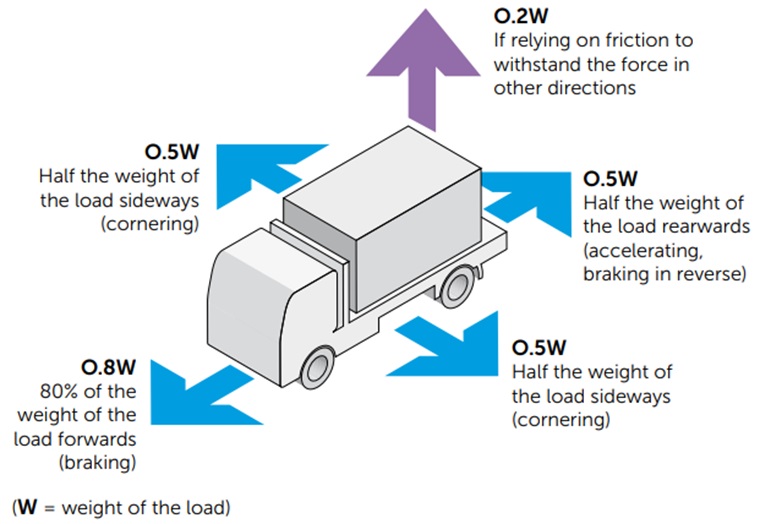How to secure loads on your vehicle
You could be prosecuted if you don't position or restrain a load correctly on your vehicle.
All loads must be safely positioned on or in a vehicle and be secured.
When transporting any load, you must:
- use a vehicle appropriate for the type of load you are carrying
- position the load correctly
- use suitable restraint equipment in good condition
- check your load restraint before leaving and during the trip.
How to meet the standards
Restraining a load will meet the load restraint performance standards if it doesn't shift when subjected to the following forces:

Graphic used with permission from the National Transport Commission.
The load restraint system must be capable of withstanding these forces:
- 0.8 'g' deceleration in a forward direction
- 0.5 'g' deceleration in a rearward direction
- 0.5 'g' deceleration in a lateral direction
- 0.2 'g' acceleration in a vertical direction if relying on friction to withstand forces in other directions.
'G' means gravitational acceleration or 9.81m/s squared.
More information
For more information, read the v64 load restraint information bulletin PDF (362.7 KB)
Give feedback about this page.
Share this page:
URL copied!